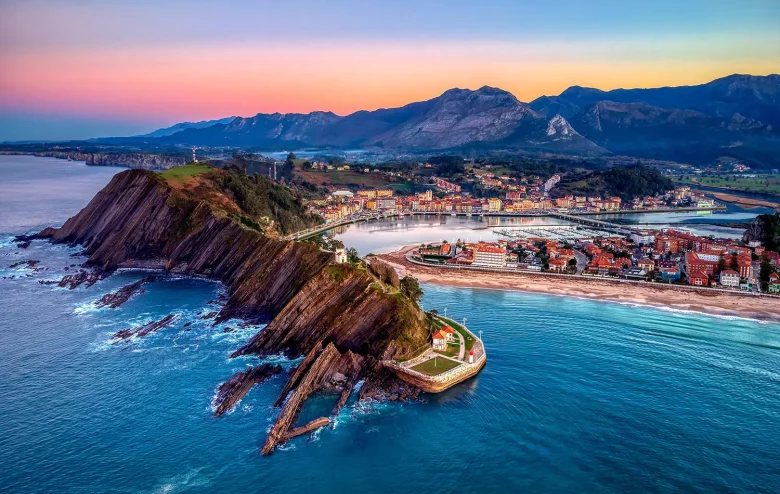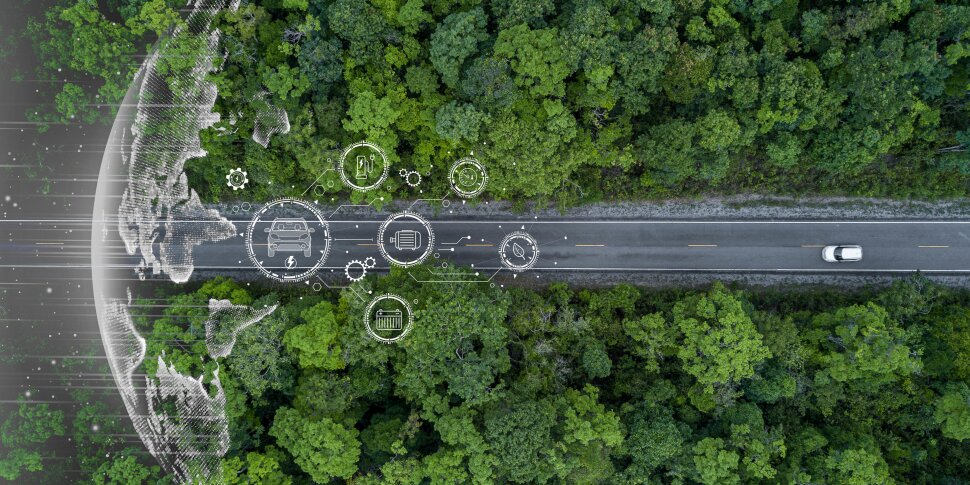Causal Modelling of the Key Competitiveness Assessment Factors of Wellness Tourism Destinations: A DEMATEL Approach
Downloads
Doi:10.28991/HEF-2023-04-02-01
Full Text:PDF
Downloads
Mueller, H., & Kaufmann, E. L. (2001). Wellness tourism: Market analysis of a special health tourism segment and implications for the hotel industry. Journal of Vacation Marketing, 7(1), 5–17. doi:10.1177/135676670100700101.
Težak Damijanič, A. (2019). Wellness and healthy lifestyle in tourism settings. Tourism Review, 74(4), 978–989. doi:10.1108/TR-02-2019-0046.
Chen, K.-H., Chang, F.-H., & Wu (Kenny), C. (2013). Investigating the wellness tourism factors in hot spring hotel customer service. International Journal of Contemporary Hospitality Management, 25(7), 1092–1114. doi:10.1108/ijchm-06-2012-0086.
Wang, K., Xu, H., & Huang, L. (2020). Wellness tourism and spatial stigma: A case study of Bama, China. Tourism Management, 78, 104039. doi:10.1016/j.tourman.2019.104039.
World Tourism Organization (UNWTO). (2018). Exploring Health Tourism – Executive Summary. World Tourism Organization (UNWTO), Madrid, Spain. doi:10.18111/9789284420308.
GHS Index. (2021). GHS Index Country Profile for Thailand. Global Health Security (GHS) Index 2021, Washington, United States. Available online: https://www.ghsindex.org/country/thailand/ (accessed on March 2023).
GWI. (2022). The Global Wellness Economy: Country Rankings 2022. Global Wellness Institute, Miami, United States. Available online: https://globalwellnessinstitute.org/industry-research/2022-global-wellness-economy-country-rankings/#:~:text=The%20 Top%2020%20Wellness%20Markets,spend%20the%20most%20on%20wellness (accessed on March 2023).
Department of Health Service Support, Ministry of Public. (2017). Thailand Development Strategy as an international wellness center (MEDICAL HUB) (2017 - 2026). https://ict.moph.go.th/upload_file/files/eHealth_Strategy_ENG_141117.pdf (accessed on January 2023).
Salehi, R., Ali Asaadi, M., Haji Rahimi, M., & Mehrabi, A. (2021). The information technology barriers in supply chain of sugarcane in Khuzestan province, Iran: A combined ANP-DEMATEL approach. Information Processing in Agriculture, 8(3), 458–468. doi:10.1016/j.inpa.2020.09.005.
Jabla, R., Khemaja, M., & Faiz, S. (2022). Decision-making improvement in dynamic environments using machine learning. Journal of Human, Earth, and Future, 3(1), 55-68. doi:10.28991/HEF-2022-03-01-04.
Liou, J. J. H., Tzeng, G. H., & Chang, H. C. (2007). Airline safety measurement using a hybrid model. Journal of Air Transport Management, 13(4), 243–249. doi:10.1016/j.jairtraman.2007.04.008.
Tzeng, G. H., Chiang, C. H., & Li, C. W. (2007). Evaluating intertwined effects in e-learning programs: A novel hybrid MCDM model based on factor analysis and DEMATEL. Expert Systems with Applications, 32(4), 1028–1044. doi:10.1016/j.eswa.2006.02.004.
Kambu, Z., Jinca, M. Y., Pallu, M. S., & Ramli, M. I. (2022). Meta synthesis of community participation model on Trans-Papua road development. Civil Engineering Journal, 8(11), 2476-2489. doi:10.28991/CEJ-2022-08-11-08.
Hapsari, I. C., Anandya, R., Hidayanto, A. N., Budi, N. F. A., & Phusavat, K. (2022). Prioritizing Barriers and Strategies Mapping in Business Intelligence Projects Using Fuzzy AHP TOPSIS Framework in Developing Country. Emerging Science Journal, 6(2), 337-355. doi:10.28991/ESJ-2022-06-02-010.
Tzeng, G.-H., & Huang, J.-J. (2011). Multiple Attribute Decision Making. Chapman and Hall/CRC, New York, United States. doi:10.1201/b11032.
Esfandiar, K., Rahmani Seryasat, M., & Kozak, M. (2023). To shop or not to shop while traveling? Exploring the influence of shopping mall attributes on overall tourist shopping satisfaction. Tourism Recreation Research, 1–16. doi:10.1080/02508281.2023.2186088.
Chu-Hua, L., Sun-Weng, H., Mei-Ting, H., Chiao-Bing, L., & Gwo-Hshiung, T. (2023). Improving the Poverty-Alleviating Effects of Bed and Breakfast Tourism Using Z-DEMATEL. International Journal of Fuzzy Systems, 25(5), 1907–1921. doi:10.1007/s40815-023-01481-6.
Asadi, H., Soffianian, A., Hemami, M. R., Fakheran, S., Akbari Feizabadi, H., & Corcoran, F. (2022). A hybrid GIS-OWA and DANP method for the identification and evaluation of ecotourism attractions: the case study of Abbas Abad Wildlife Refuge, Iran. GeoJournal, 87(6), 5179–5196. doi:10.1007/s10708-021-10564-6.
Oralhan, B., Oralhan, Z., & Kirdök, N. (2022). Evaluation of Ski Centers' Performance Using Multiple-Criteria Decision-Making Methods. Polish Journal of Sport and Tourism, 29(3), 29–35. doi:10.2478/pjst-2022-0018.
Huang, W., Chen, C. Y., & Fu, Y. K. (2022). The Sustainable Island Tourism Evaluation Model Using the FDM-DEMATEL-ANP Method. Sustainability (Switzerland), 14(12), 7244. doi:10.3390/su14127244.
Gómez, S. D. í., Fernández, A. J. R., & Bravo, M. R. R. (2022). Application of Neutrosophy in the Study of the Factors that Influence Ecuadorian Tourism Development. Neutrosophic Sets and Systems, 52(1), 389–399. doi:10.5281/zenodo.7374440.
Fathi, M. R., Torabi, M., & Razi Moheb Saraj, S. (2022). The future of apitourism in Iran based on critical uncertainty approach and DEMATEL/COPRAS techniques. Journal of Tourism Futures. doi:10.1108/JTF-09-2021-0215.
Kaymaz, Ç. K., Çakır, Ç., Birinci, S., & Kızılkan, Y. (2021). GIS-Fuzzy DEMATEL MCDA model in the evaluation of the areas for ecotourism development: A case study of "Uzundere”, Erzurum-Turkey. Applied Geography, 136, 102577. doi:10.1016/j.apgeog.2021.102577.
Hosseini, A., Pourahmad, A., Ayashi, A., Tzeng, G. H., Banaitis, A., & Pourahmad, A. (2021). Improving the urban heritage based on a tourism risk assessment using a hybrid fuzzy MADM method: The case study of Tehran's central district. Journal of Multi-Criteria Decision Analysis, 28(5–6), 248–268. doi:10.1002/mcda.1746.
Zhou, W., Chen, L. Y., & Chou, R. J. (2021). Important factors affecting rural tourists' aesthetic experience: a case study of Zoumatang village in Ningbo. Sustainability (Switzerland), 13(14), 7594. doi:10.3390/su13147594.
Chang, D. S., & Wu, W. De. (2021). Impact of the COVID-19 pandemic on the tourism industry: Applying TRIZ and DEMATEL to construct a decision-making model. Sustainability (Switzerland), 13(14), 7610. doi:10.3390/su13147610.
Lo, H. W., & Liou, J. J. H. (2021). Comments on "Factors influencing medical tourism adoption in Malaysia: A DEMATEL-Fuzzy TOPSIS approach.” Computers & Industrial Engineering, 157, 107333. doi:10.1016/j.cie.2021.107333.
Altuntas, F., & Gok, M. S. (2021). The effect of COVID-19 pandemic on domestic tourism: A DEMATEL method analysis on quarantine decisions. International Journal of Hospitality Management, 92, 102719. doi:10.1016/j.ijhm.2020.102719.
Moher, D., Liberati, A., Tetzlaff, J., & Altman, D. G. (2009). Preferred reporting items for systematic reviews and meta-analyses: the PRISMA statement. Journal of Clinical Epidemiology, 62(10), 1006–1012. doi:10.1016/j.jclinepi.2009.06.005.
Bilbao-Terol, A., Arenas-Parra, M., & Onopko-Onopko, V. (2019). Measuring regional sustainable competitiveness: a multi-criteria approach. Operational Research, 19(3), 637–660. doi:10.1007/s12351-017-0367-9.
Salinas Fernández, J. A., Serdeira Azevedo, P., Martín Martín, J. M., & Rodríguez Martín, J. A. (2020). Determinants of tourism destination competitiveness in the countries most visited by international tourists: Proposal of a synthetic index. Tourism Management Perspectives, 33, 100582. doi:10.1016/j.tmp.2019.100582.
Gajič, T., Penič, M., Vujko, A., & Petrovič, M. D. (2018). Development Perspectives of Rural Tourism Policy - A Comparative Study of Rural Tourism Competitiveness Based on Perceptions of Tourism Workers in Slovenia and Serbia. Eastern European Countryside, 24(1), 143–154. doi:10.2478/eec-2018-0007.
Kurek, K. A., Heijman, W., van Ophem, J., Gč™dek, S., & Strojny, J. (2020). The impact of geothermal resources on the competitiveness of municipalities: evidence from Poland. Renewable Energy, 151, 1230–1239. doi:10.1016/j.renene.2019.11.126.
Portolan, A. (2019). the Competitiveness of the Republic of Croatia on the European Union Tourism Market. Tourism in Southern and East Europe, 5, 581–595. doi:10.20867/tosee.05.15.
Reisinger, Y., Michael, N., & Hayes, J. P. (2019). Destination competitiveness from a tourist perspective: A case of the United Arab Emirates. International Journal of Tourism Research, 21(2), 259–279. doi:10.1002/jtr.2259.
Wang, J., Huang, X., Gong, Z., & Cao, K. (2020). Dynamic assessment of tourism carrying capacity and its impacts on tourism economic growth in urban tourism destinations in China. Journal of Destination Marketing & Management, 15, 100383. doi:10.1016/j.jdmm.2019.100383.
Añaña, E. da S., Rodrigues, R. C., & Flores, L. C. da S. (2018). Competitive performance as a substitute for competiveness measurement in tourism destinations: an integrative study. International Journal of Tourism Cities, 4(2), 207–219. doi:10.1108/IJTC-07-2017-0035.
Armenski, T., Dwyer, L., & Pavlukovič, V. (2018). Destination Competitiveness: Public and Private Sector Tourism Management in Serbia. Journal of Travel Research, 57(3), 384–398. doi:10.1177/0047287517692445.
Garau, C., & Pavan, V. M. (2018). Evaluating urban quality: Indicators and assessment tools for smart sustainable cities. Sustainability (Switzerland), 10(3), 575. doi:10.3390/su10030575.
Dundar Ege, S., & Demir Uslu, Y. (2018). An Assessment of Competitive Factors in Medical Tourism. International Journal of Research in Business and Social Science (2147- 4478), 7(2), 14–21. doi:10.20525/ijrbs.v7i2.876.
Andrades, L., & Dimanche, F. (2019). Destination competitiveness in Russia: tourism professionals' skills and competences. International Journal of Contemporary Hospitality Management, 31(2), 910–930. doi:10.1108/IJCHM-11-2017-0769.
Hanafiah, M. H., & Zulkifly, M. I. (2019). Tourism destination competitiveness and tourism performance. Competitiveness Review: An International Business Journal, 29(5), 592–621. doi:10.1108/cr-07-2018-0045.
Roy, J., Chatterjee, K., Bandyopadhyay, A., & Kar, S. (2018). Evaluation and selection of medical tourism sites: A rough analytic hierarchy process based multi-attributive border approximation area comparison approach. Expert Systems, 35(1), 12232. doi:10.1111/exsy.12232.
Clemes, M. D., Dean, D. L., & Thitiya, T. (2020). Modelling the behavioural intentions of day spa customers. Asia Pacific Journal of Marketing and Logistics, 32(8), 1699–1716. doi:10.1108/APJML-04-2019-0258.
Özen, N., & Varolgüneş, F. K. (2018). Assessment of Thermal Tourism Facilities (TTFS) from the Perspective of Ecological Architecture-The Case of Eastern of Turkey. Online Journal of Art and Design, 6(5), 360-380.
Pan, X., Yang, Z., Han, F., Lu, Y., & Liu, Q. (2019). Evaluating potential areas for mountain wellness tourism: A case study of Ili, Xinjiang province. Sustainability (Switzerland), 11(20), 5668. doi:10.3390/su11205668.
Masih, M., Jozi, S. A., Lahijanian, A. A. M., Danehkar, A., & Vafaeinejad, A. (2018). Capability assessment and tourism development model verification of Haraz watershed using analytical hierarchy process (AHP). Environmental Monitoring and Assessment, 190(8), 468. doi:10.1007/s10661-018-6823-z.
Lo, M. C., Chin, C. H., & Law, F. Y. (2019). Tourists' perspectives on hard and soft services toward rural tourism destination competitiveness: Community support as a moderator. Tourism and Hospitality Research, 19(2), 139–157. doi:10.1177/1467358417715677.
Medical Tourism Association. (2020). Medical tourism index 2020-2021. Medical Tourism Association, Palm Beach Gardens, United States. Available online: https://www.medicaltourism.com/mti/home (accessed on March 2023).
Indrawan, G., Setiawan, H., & Gunadi, A. (2022). Multi-class SVM Classification Comparison for Health Service Satisfaction Survey Data in Bahasa. HighTech and Innovation Journal, 3(4), 425-442. doi:10.28991/HIJ-2022-03-04-05.
Michopoulou, E., Al-Qasmi, I., & Melpignano, C. (2021). Co-creating Value in Desert Tourism Experiences. Tourism Planning and Development, 18(2), 245–265. doi:10.1080/21568316.2021.1873835.
Glaser, B. G., & Strauss, A. L. (2017). The Discovery of Grounded Theory. Routledge, New York, United States. doi:10.4324/9780203793206.
Rovinelli, R.J. and Hambleton, R.K. (1977) On the Use of Content Specialists in the Assessment of Criterion-Referenced Test Item Validity. Tijdschrift Voor Onderwijs Research, 2, 49-60.
Nunnally, J. C. (1978). Psychometric Theory: 2d Ed. McGraw-Hill, New York, United States.
Hair, J., Black, W., Babin, B., & Anderson, R. (2010). Multivariate Data Analysis (7th Ed.). Prentice-Hall, United States.
Bentler, P. M. (1990). Comparative fit indexes in structural models. Psychological Bulletin, 107(2), 238–246. doi:10.1037/0033-2909.107.2.238.
Lin, C. J., & Wu, W. W. (2008). A causal analytical method for group decision-making under fuzzy environment. Expert Systems with Applications, 34(1), 205–213. doi:10.1016/j.eswa.2006.08.012.
Yang, Y., Shieh, H., Leu, J., & Tzeng, G.-H. (2008). A novel hybrid MCDM model combined with DEMATEL and ANP with applications. International Journal of Operations Research, 5(3), 160–168.
Dwyer, L. (2022). Destination competitiveness and resident well-being. Tourism Management Perspectives, 43, 100996. doi:10.1016/j.tmp.2022.100996.
Flores-Romero, M. B., Pérez-Romero, M. E., ílvarez-García, J., & del Río-Rama, M. de la C. (2021). Fuzzy Techniques Applied to the Analysis of the Causes and Effects of Tourism Competitiveness. Mathematics, 9(7), 777. doi:10.3390/math9070777.
Mustafa, H., Omar, B., Mukhiar, S. N. S., Park, O., & Zainol, W. W. (2021). Exploring Island Destination Competitiveness of Langkawi and Jeju UNESCO Global Geopark: Assessment from International Tourists and Tourism Practitioners. Tourism Planning & Development, 20(6), 1054–1081. doi:10.1080/21568316.2021.1979637.
Tleuberdinova, A., Salauatova, D., & Pratt, S. (2022). Assessing tourism destination competitiveness: the case of Kazakhstan. Journal of Policy Research in Tourism, Leisure and Events, 1–19. doi:10.1080/19407963.2022.2027954.
Grassini, L., Magrini, A., & Conti, E. (2023). Formative-reflective scheme for the assessment of tourism destination competitiveness: an analysis of Italian municipalities. Quality and Quantity, 57(4), 3523–3548. doi:10.1007/s11135-022-01519-1.
- The authors retain all copyrights. It is noticeable that authors will not be forced to sign any copyright transfer agreements.
- This work (including HTML and PDF Files) is licensed under a Creative Commons Attribution 4.0 International License.














